WW1 sinking of Lusitania recalled
- Published
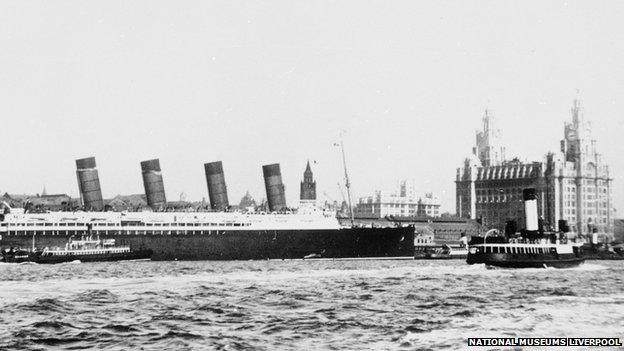
The Lusitania sailed regularly between Liverpool (above) and New York from 1907 to 1915
Some 1,200 people died when the ocean liner Lusitania was sunk by a German U-boat in World War One. A centenary since its loss, a new exhibition is remembering the massacre, which is often seen as bringing the United States into the conflict.
The sinking of the Lusitania in 1915 is less widely known than the Titanic disaster three years earlier but in some ways it was more significant.
Much like its more famous counterpart, the Lusitania was large, luxurious and fast. In its home port of Liverpool, "Lusi" was also regarded as the jewel in the city's crown.
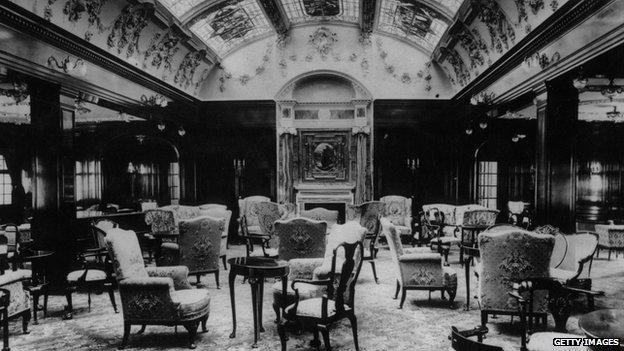
First class passengers mingled in the ship's spacious lounge and third class accommodation was considered better than that on other liners
The ship was launched at a time when safe air flights were still a dream and sea travel was king. Named after a Roman province that once stretched across modern Portugal and some of Spain, it competed for passengers travelling across the North Atlantic.
"It's likely that the association with imperial Rome would have chimed with Edwardian notions of the British Empire," says Ian Murphy from the Merseyside Maritime Museum.
Although owned by the Cunard firm in Liverpool, construction of the liner started in 1904 at Glasgow's famous Clydebank shipyard,, external which had to be developed to cope with the Lusitania's unprecedented scale.
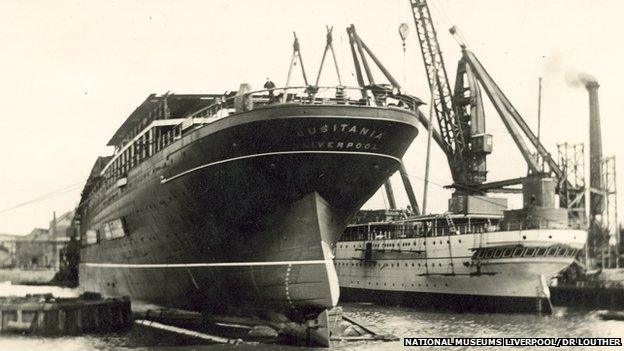
Construction of the liner began in 1904 on the River Clyde in Glasgow
At 787ft (240m) and 31,550 tonnes, it was then the largest ship in the world.
The Lusitania departed on its maiden voyage from Liverpool to New York on 7 September 1907, and, a month later, it became the fastest liner on the North Atlantic at an average of nearly 24 knots.
Reclaiming the prestigious "Blue Riband" record - held by German ships for the previous 10 years - was a badge of pride for Britain and the Lusitania would regularly compete with its younger but bigger sister ship, the Mauretania, for the honour.
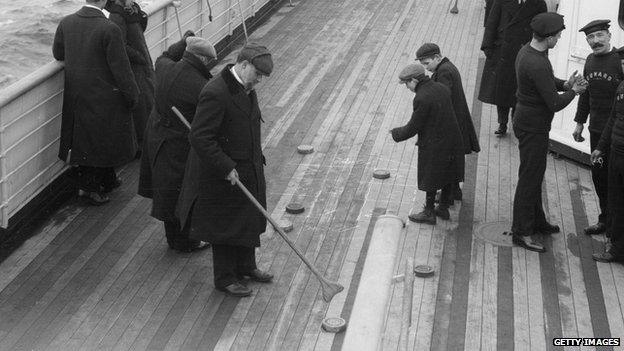
Passengers enjoy a game of shuffleboard during a voyage, while a Cunard crew member (right) gazes at the camera
However this quest for speed was against the backdrop of a naval arms race between Britain and Germany in particular, but also France, Japan, Italy and the US.
"Although her primary use was as a passenger ship Cunard had to design both the Lusitania and Mauretania to [British] Admiralty specifications," says Mr Murphy.
"They had to make the entire fleet available for military service in times of national emergency, as part of their agreement with British government to secure a funding subsidy."
After war broke out in 1914, Germans faced food and fuel shortages due to its ports being blockaded by Britain's Royal Navy.
The German navy wanted to retaliate against Britain, which continued to import supplies from the US. Their weapon of choice was submarines, known in German as Unterseeboot (undersea boat) or U-boot (U-boat).
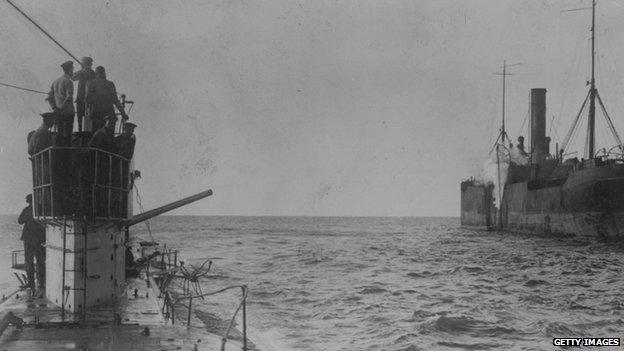
German U-boats attacked Allied ships, sinking about 2,600 vessels
In February 1915, Germany declared the seas around the British Isles a war zone.
"Allied vessels entering the zone were at risk," Mr Murphy explains. "The German embassy placed a warning notice to passengers travelling on ships owned by Britain and her allies in 50 US newspapers.
"It was placed next to sailing notices for Lusitania in New York newspapers, which was taken as an indication that it was directed towards the ship."
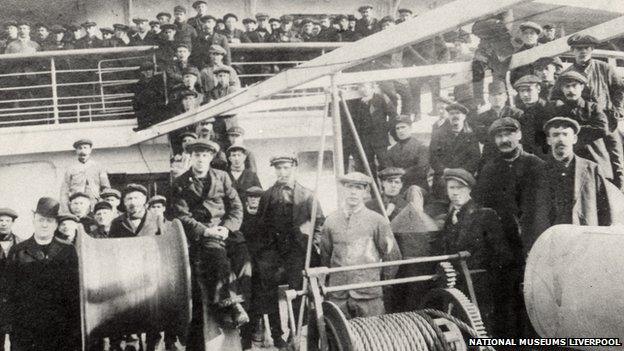
Firemen and engine room staff on the deck of the Lusitania
However many people did not think the Germans would be audacious enough to attack a famous liner carrying many American citizens.
Lusitania survivor Parry Jones told the BBC: "I don't think anybody took very much notice about this because they thought - well no nation would dare go to the point of sinking a passenger liner and especially a liner so famous as the Lusitania.
"A great ship like this we are told, she wouldn't sink for five or six hours so there would be plenty of time to get anybody off if this dreadful thing did happen."
On a sunny afternoon on 7 May 1915, the Lusitania was sailing near southern Ireland with about 1,300 passengers and nearly 700 crew members.
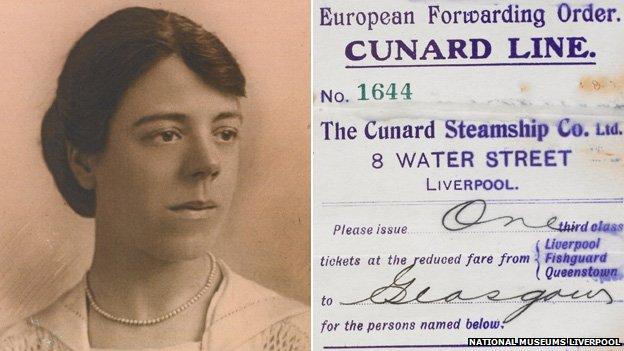
The third-class ticket of British nanny Margaret Ballantyne, who survived the sinking but never spoke about it
After 14:00, a U-boat, known as U-20, unleashed a torpedo that soon struck the giant liner.
It only took 18 minutes for the Lusitania to sink, compared to nearly three hours for the Titanic. Approximately 1,200 people died while there were about 770 survivors.
The scale of death meant Irish soldiers had to dig a mass grave near the port town of Cobh (then known as Queenstown), where both maritime disasters are now marked with memorials.
Alice Page, who was onboard, recalled "a terrible sensation of being sucked under the ship".
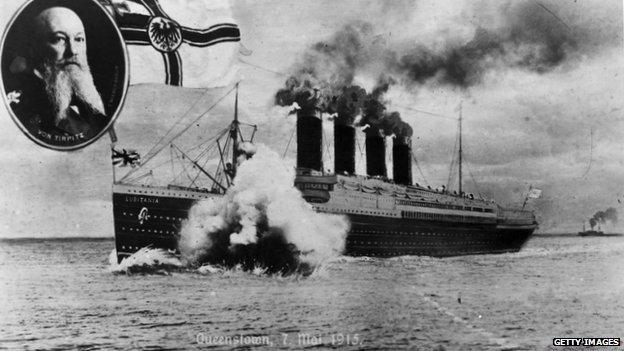
Admiral Alfred von Tirpitz (inset), who was a driving force behind the growth of the German navy, is depicted in an image of the sinking of the Lusitania
After escaping on a rescue boat with other passengers, they "sung hymns and there was no panic whatever... I'd got the baby in my arms - we were rowing for quite a while.
"We saw a fishing smack and they called out to us would we give their names and report that they were helping us and then they could throw a tow to us. Word was given and then we were towed. And after that a British gun boat picked us up."
In Liverpool - a city about 600 people on the Lusitania had links with - one woman wrote, external: "I was in town yesterday morning and that little street at the side of the Cunard offices was filled with a dense mass of people waiting for news.
"The crew belonged almost entirely to Liverpool and Wirral. Poor things!"
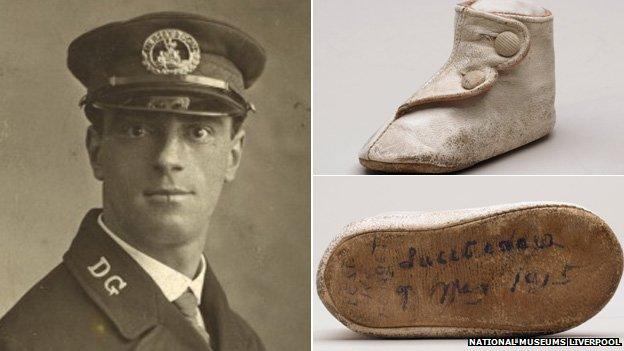
Able Seaman Joseph Parry received a baby's shoe from the child's grateful mother after he saved them - it was inscribed "Lest we forget. Lusitania 7 May 1915"
The disaster provoked outrage especially in Britain and the US, and rioters attacked German shops, external in Merseyside, Manchester and London. In response, Liverpool police temporarily interned Germans in the city for their own safety.
Although controversy arose over why the Lusitania did not zigzag to confuse U-boats and whether a British Navy destroyer should have escorted the ship, experts agree the sinking broke international law.
In 1918, a New York court, external established the Lusitania was carrying 4,200 cases of small arms ammunition but was neither armed nor carrying explosives.
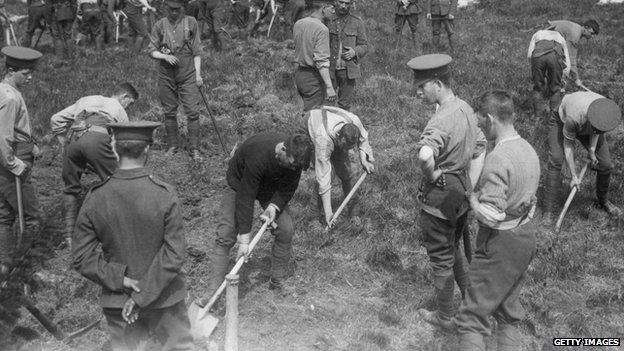
Irish soldiers dig a mass grave for the dead in a churchyard near Cobh
However there have long been rumours that the ship held other undeclared explosives cargo, with speculation this may have triggered the second explosion onboard after the torpedo attack and quickened the ship's descent.
At the time, the Germans said the arms cargo justified their attack, claiming the ship was "carrying large quantities of war material".
A number of divers have surveyed the wreck, but no explosives have ever been found.
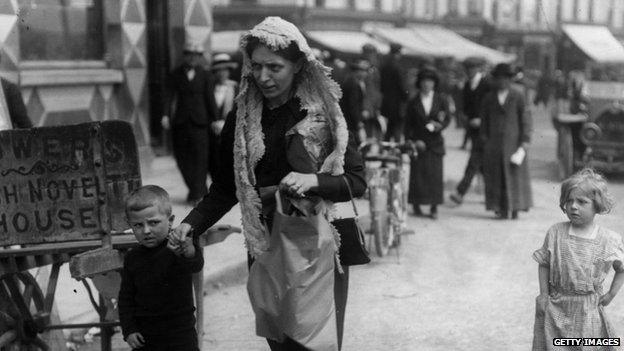
A mother and her children walk through Cobh after surviving the disaster - about 130 children were onboard
With the death of about 130 Americans in the tragedy, Britain used the disaster to entice the US into the war on the side of the Allies. However it was another two years before the US declared its official entry in 1917., external
"Lusitania wasn't just Liverpool's most-loved ship," says Ellie Moffat, from the Merseyside Maritime Museum. "She had worldwide fame and was a familiar sight on both sides of the Atlantic.
"The loss was one of the most infamous events of the First World War."
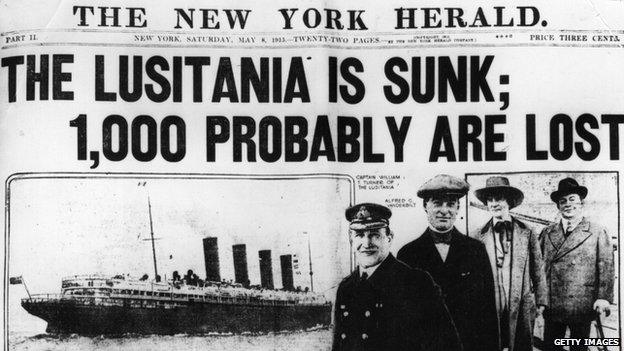
The New York Herald highlighted some of the ship's famous passengers including millionaire sportsman Alfred Vanderbilt (in cap), last seen giving his lifebelt to a young mother
Lusitania: life, loss, legacy, external opens on 27 March at Merseyside Maritime Museum
- Published7 May 2015
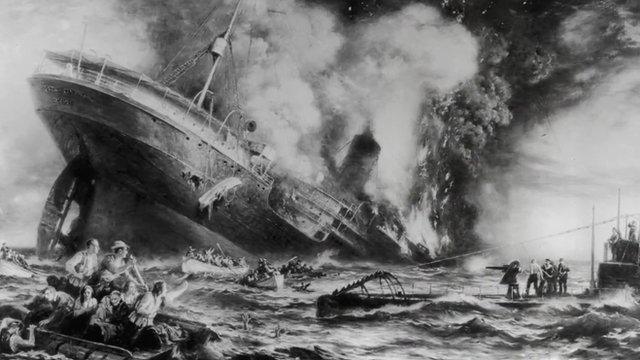
- Published6 May 2015
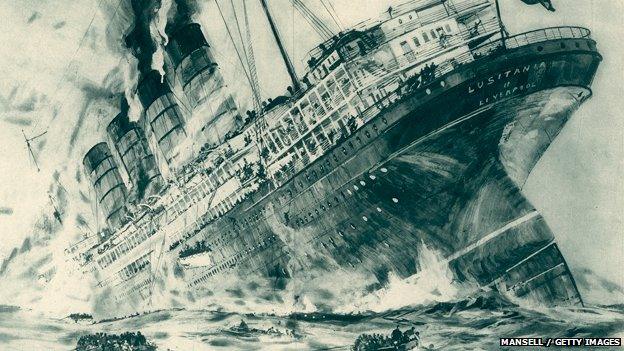
- Published1 May 2014
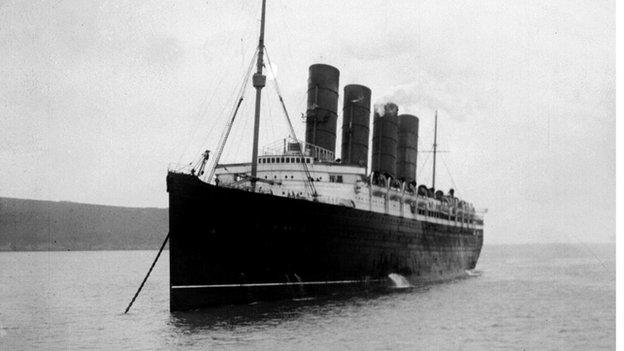
- Published10 March 2015
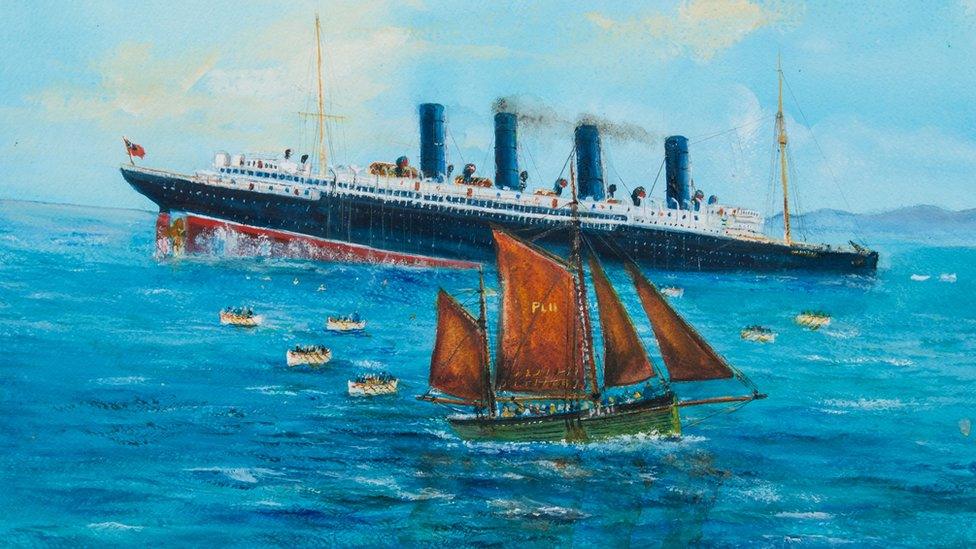
- Published11 January 2011